Ancient Psychedelia: Alien Gods & Mushroom Goddesses
Online Book - Chapter 8, Page 119
Back to Online Book Mainpage / Next Page (Chapter 8, Page 120)
In the Louvre Museum, there is a statue of Pazuzu (22a). Author and scholar François Lenormant writes: “The Louvre possesses the image of a horrible demon in upright posture, with a dog’s head, eagle’s feet, lion’s paws, and a scorpion’s tail. Half the head shows the skull fleshless. He has four spread wings. A ring at the top of the head served to suspend the figure. On the back of the statue is the inscription in sumero-accadian, indicating that it represents the demon of the southwest wind and that it should be placed at the door or the window for the sake of warding off his injurious influence. The southwest wind in Chaldea comes from the deserts of Arabia, and its burning breath parches everything, producing the same ravages as the khamsin in Syria and the simoon in Africa.” (88) He is called Nergal to the Akkadians, as shown on a relief carving of from Hatra in Iraq from 100-200 AD (22d). On a Babylonian fired clay plaque c. 1500 BC, he is depicted with a singular leg and body frame, holding two serpents, the shape of which implies the mushroom (22b), while another plaque from the 1600-1800 BC era depicts him holding a serpent while donning a mushroom style headdress (22c), and yet another has Nergal holding a caduceus in his hands (22g).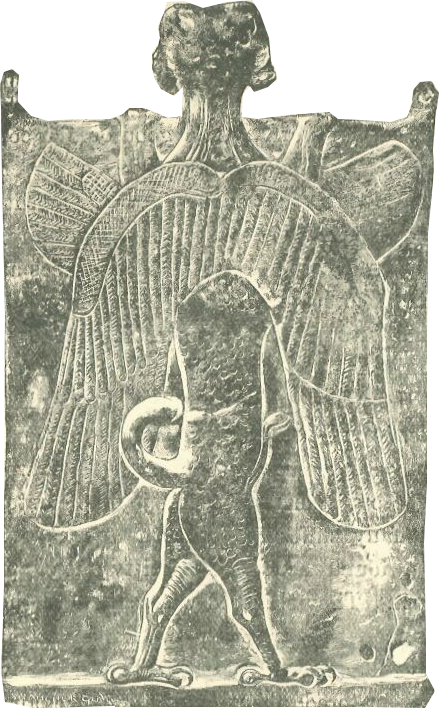 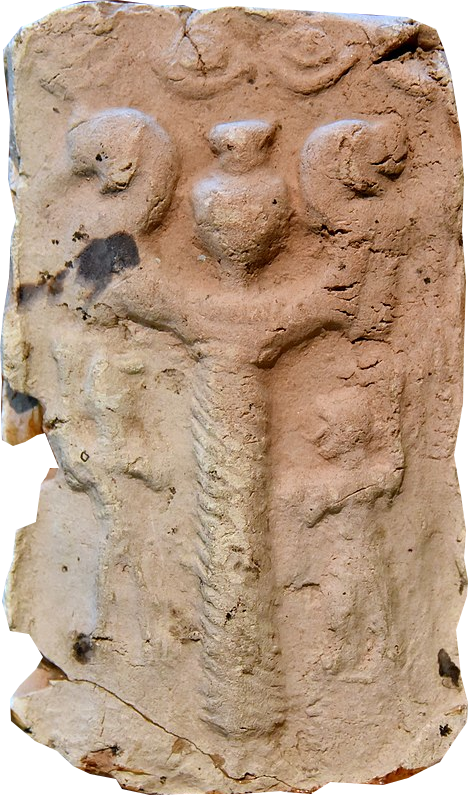 R: (22b) Nergal. Babylonian Fired clay Plaque c. 2003-1595 BC L: (22c) Nergal. 1600-1800 BC 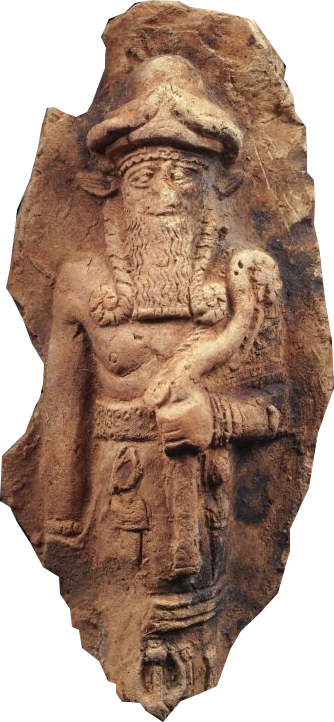 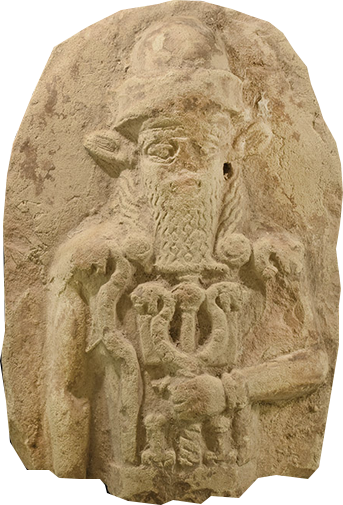 R: (22g) Nergal on Babylonian Plaque c. 1800-1700 BC |
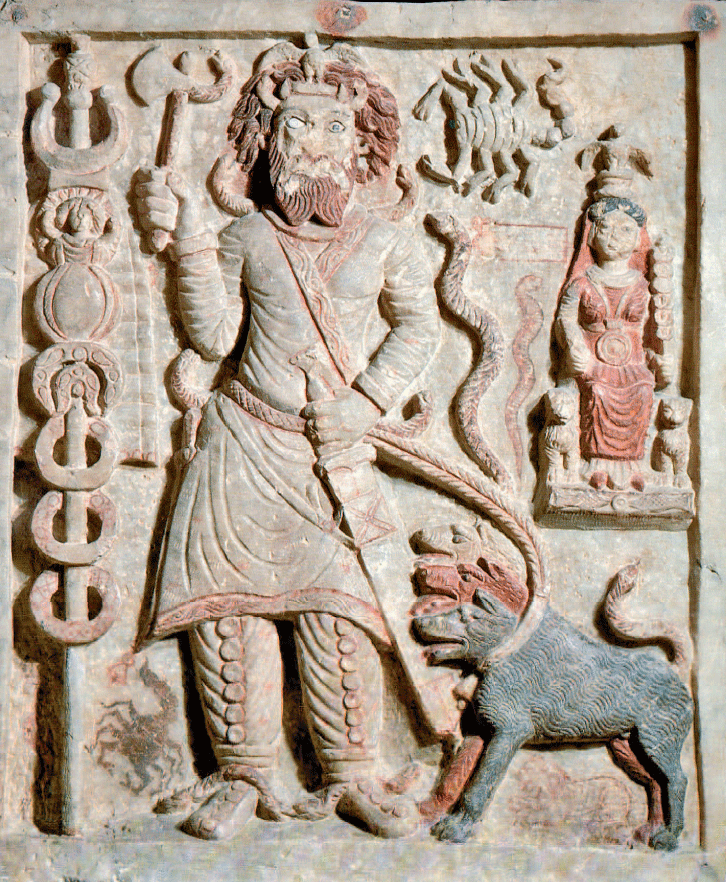 (22d) Relief carving of Nergal from Hatra in Iraq c. 100-200 AD 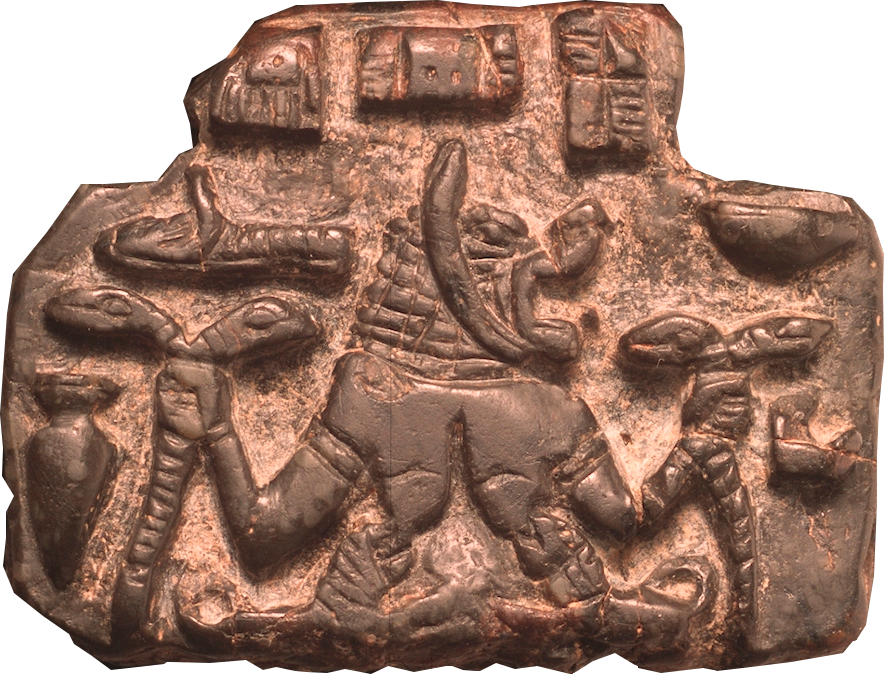 (14c) Lamashtu Plaque c. 700 BC 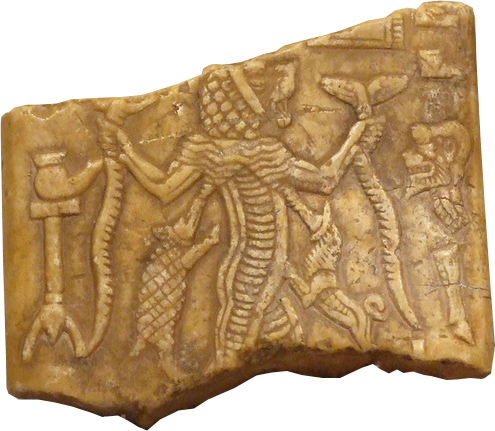 (14c) Lamashtu Plaque c. 700 BC (88) The History of the Devil and the Idea of Evil from the Earliest Times to the Present Day, Paul Carus, Dover Publications, 2008 (Originally Published 1900), p. 44-45; Histoire ancienne de l’ Orient, V, P. 212 |
Go Back to Page 118